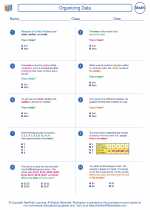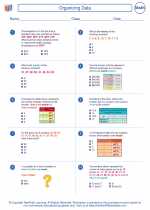Organizing Data -> vertex angle
Vertex Angle
A vertex angle is the angle formed by the two lines or rays that extend from the same vertex, or corner. In geometry, the vertex angle is often associated with polygons, such as triangles and quadrilaterals. Understanding vertex angles is important for understanding the properties of polygons and for solving geometric problems.
Vertex Angle in Triangles
In a triangle, each vertex has an associated vertex angle. For example, in triangle ABC, the angles at vertices A, B, and C are denoted as angle A, angle B, and angle C, respectively. These vertex angles determine the properties and classification of the triangle, such as whether it is acute, obtuse, or right-angled.
Vertex Angle in Quadrilaterals
In a quadrilateral, such as a square or rectangle, each vertex also has an associated vertex angle. Understanding the vertex angles of a quadrilateral is essential for determining its properties, such as whether it is a parallelogram, rhombus, or trapezoid.
Study Guide for Vertex Angles:
- Understand the concept of a vertex angle as the angle formed by two lines or rays extending from the same vertex.
- Identify and calculate the vertex angles in different polygons, such as triangles and quadrilaterals.
- Recognize the relationship between vertex angles and the properties of polygons, such as the classification of triangles and quadrilaterals.
- Apply the properties of vertex angles to solve geometric problems and prove geometric theorems.
- Practice measuring and calculating vertex angles using protractors and geometric tools.
By mastering the concept of vertex angles, you will gain a deeper understanding of the properties and classifications of polygons, and be better equipped to solve geometric problems involving angles and shapes.
.◂Math Worksheets and Study Guides Seventh Grade. Organizing Data

 Worksheet/Answer key
Worksheet/Answer key
 Worksheet/Answer key
Worksheet/Answer key
 Worksheet/Answer key
Worksheet/Answer key
